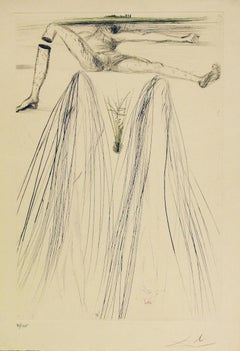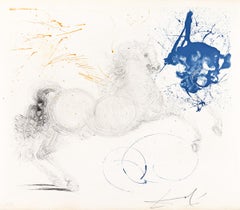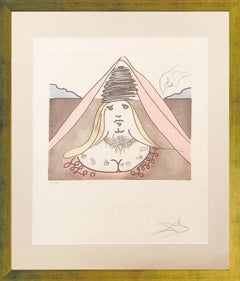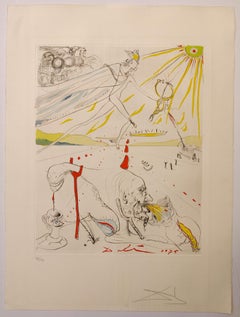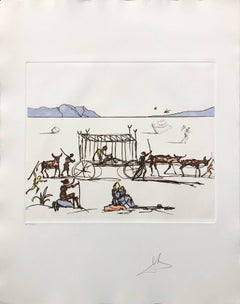Aquatint Prints and Multiples
1970s Surrealist Aquatint Prints and Multiples
Etching, Aquatint
1960s Surrealist Aquatint Prints and Multiples
Color, Engraving, Etching, Aquatint
1980s Surrealist Aquatint Prints and Multiples
Paper, Etching, Aquatint
1970s Aquatint Prints and Multiples
Etching, Aquatint
1980s Surrealist Aquatint Prints and Multiples
Aquatint, Etching, Paper
1970s Surrealist Aquatint Prints and Multiples
Drypoint, Paper, Aquatint
1970s Surrealist Aquatint Prints and Multiples
Etching, Aquatint
1970s Surrealist Aquatint Prints and Multiples
Etching, Aquatint
1970s Surrealist Aquatint Prints and Multiples
Drypoint, Paper, Aquatint
1970s Surrealist Aquatint Prints and Multiples
Drypoint, Paper, Aquatint
1970s Surrealist Aquatint Prints and Multiples
Etching, Aquatint
1970s Surrealist Aquatint Prints and Multiples
Drypoint, Paper, Aquatint
1970s Surrealist Aquatint Prints and Multiples
Etching, Aquatint
1970s Surrealist Aquatint Prints and Multiples
Etching, Aquatint
1970s Surrealist Aquatint Prints and Multiples
Drypoint, Paper, Aquatint
1970s Surrealist Aquatint Prints and Multiples
Drypoint, Paper, Aquatint
1970s Surrealist Aquatint Prints and Multiples
Drypoint, Paper, Aquatint
1970s Surrealist Aquatint Prints and Multiples
Drypoint, Aquatint, Paper
1970s Surrealist Aquatint Prints and Multiples
Drypoint, Paper, Aquatint
1970s Surrealist Aquatint Prints and Multiples
Drypoint, Aquatint, Paper
1980s Surrealist Aquatint Prints and Multiples
Photogravure, Aquatint, Drypoint
1970s Surrealist Aquatint Prints and Multiples
Drypoint, Aquatint
1960s Surrealist Aquatint Prints and Multiples
Etching, Aquatint
1970s Surrealist Aquatint Prints and Multiples
Drypoint, Aquatint
1970s Surrealist Aquatint Prints and Multiples
Drypoint, Aquatint
1970s Surrealist Aquatint Prints and Multiples
Drypoint, Aquatint
1970s Surrealist Aquatint Prints and Multiples
Drypoint, Aquatint
1970s Surrealist Aquatint Prints and Multiples
Drypoint, Aquatint
1970s Surrealist Aquatint Prints and Multiples
Etching, Aquatint
1980s Surrealist Aquatint Prints and Multiples
Aquatint, Etching, Paper
1970s Surrealist Aquatint Prints and Multiples
Lithograph, Paper, Engraving, Aquatint
1970s Surrealist Aquatint Prints and Multiples
Etching, Aquatint
1970s Surrealist Aquatint Prints and Multiples
Etching, Aquatint
1980s Surrealist Aquatint Prints and Multiples
Etching, Aquatint, Paper
1970s Surrealist Aquatint Prints and Multiples
Etching, Aquatint
1960s Surrealist Aquatint Prints and Multiples
Aquatint, Drypoint
Shop a Collection of Aquatint Prints and Other Fine Art Prints on 1stDibs
Buying art and design is one thing. Collecting it is quite another. Whether you’re looking to add a focal point to your living room or you’re introducing a new acquisition to an already thriving collection of art, the range of aquatints and other fine art prints on 1stDibs is waiting for you.
A technique named for its resemblance to watercolor or ink wash, aquatint is often combined with etching to create rich tonal variations. It’s a similar process to etching but the resin ground is more granulated, so the acid handles the metal differently.
Different degrees of darkness are created during the aquatint printmaking process based on the amount of time the plate is in contact with the acid. The process was famously deployed by Goya, but contemporary artists, ranging from Wayne Thiebaud and Susan Rothenberg to Joel Shapiro and Marcel Dzama have used it to dramatic effect.
And prints — as well as sculpture, photography and and other types of art — should help a residence feel more like itself. “Art plays such an important function in the home,” says Sophie Ashby, who founded her eponymous interior design studio in London in 2014. “Out of everything in a space, it has the most power.”
Find original aquatint prints and other prints and paintings for your home on 1stDibs.
